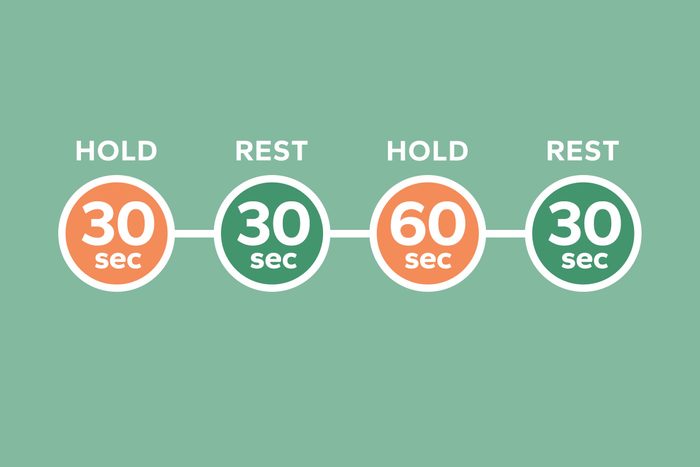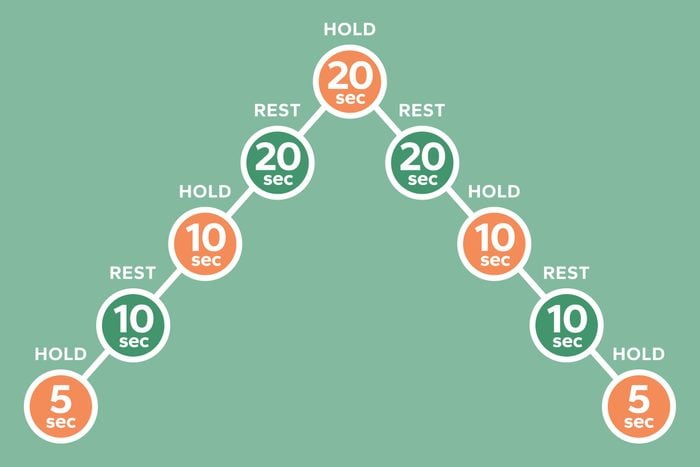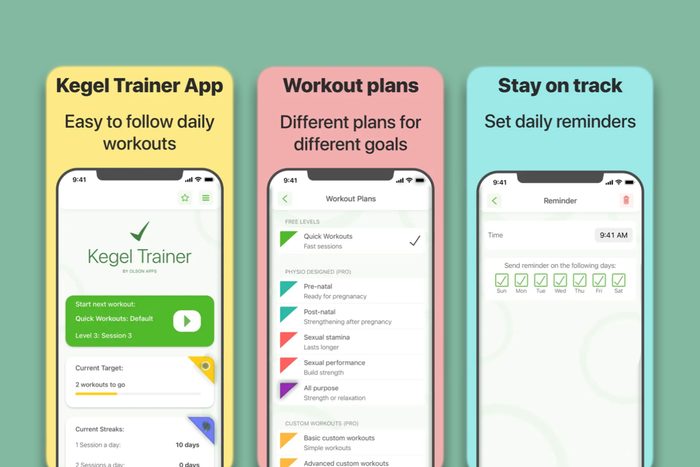
Hormone changes from menopause can weaken your pelvic floor
Menopause, when menstruation stops, and perimenopause—the 10 to 15 year process leading up to it—are totally normal, necessary, and even beautiful parts of aging. (Easy for people not dealing with it to say!) While that’s all true, it doesn’t mean menopause is fun, easy or without side effects.
A major part of going through the experience of menopause is how hormone changes affect your entire pelvic floor, including your vagina, uterus, ovaries, and the muscles that support your bladder and bowel. These changes can lead to incontinence (of both the urine and fecal varieties), organ prolapse, and sexual dysfunction.
Fortunately, there’s something you can do about it—starting right now. If you’ve never tried Kegel exercises, our photo guide will teach you how.

Why Kegel exercises?
Kegel exercises—where you contract the muscles of your pelvic floor—strengthen, stabilize and tone the pelvic floor muscles which support the uterus, bladder and rectum, says says Sherry Ross, MD, OB/GYN, women’s health expert, author of She-ology: The Definitive Guide to Women’s Intimate Health and She-ology, the She-quel.
There are multiple reasons your pelvic floor muscles may be weak. These can include pregnancy, childbirth, aging, chronic coughing or obesity—but a primary one is menopause. This is due to shifts in hormone levels as your body moves out of the childbearing phase.
By the time a woman finishes menopause, her estrogen levels have dropped by over half, her progesterone has declined from about 25 nanograms per milliliter to less than one nanogram per milliliter, and her testosterone has decreased 15%. These hormone changes are a big deal, causing changes throughout the body…but especially to the reproductive system and pelvic floor, says Dr. Ross.
Menopause hormone changes can lead to:
- Thinner and dryer vaginal tissue
- Weaker vaginal muscles
- Weaker muscles that support the bladder, bowel, and other organs
- Pelvic organs (often the bladder or uterus) that prolapse, or protrude, into the vagina
Pelvic floor exercises can help with all of these issues, says Dr. Ross.
“Kegel exercises can help delay or even prevent pelvic organ prolapse and symptoms related to pelvic floor dysfunction, including incontinence, urgency, and pain,” she explains. “Kegel exercises also make sexual intimacy and intercourse more enjoyable for you and your partner. For those with a vagina and clitoris, doing Kegels while trying to orgasm can actually enhance the orgasm.”
Here’s Why You Need to Take Better Care of Your Pelvic Floor
The best Kegel exercises for people going through menopause
Regular exercise, including walking and running, is great for your overall health but these exercises aren’t enough to strengthen your pelvic floor—you need exercises specifically targeted to those muscles.
“As with any muscle in the body, if it’s not exercised or worked out in any way, it will become weakened and lose its function and strength and the pelvic floor muscles are no different,” says Dr. Ross. “If you do Kegels daily, you will notice a benefit to your pelvic floor strength in eight to 12 weeks.”
9 Exercises That Help You Have Better Sex
Here’s your how-to guide to a pelvic floor workout.

The basic Kegel exercise
The easiest way to identify your pelvic floor muscles is to urinate, and while doing so, stop the flow of urine midstream and hold it. Hold the contraction of these muscles for three to five seconds, then relax them allowing the flow of urine to continue. Once you recognize the feeling you can replicate the contraction without having to pee while doing it. And, adds Dr. Ross, you can do this Kegel anytime, anywhere…and no one will even know what you’re up to.
Here’s how: Start in a comfortable seated position. Contract your pelvic floor muscles, hold the contraction for five seconds, and then relax for five seconds. Work up to keeping the muscles contracted for 10 seconds at a time, relaxing for 10 seconds between contractions. Aim for at least three to five sets of 10 repetitions a day.

Lying Kegels
You may have a difficult time identifying the correct muscles, especially at the beginning, and some people find it easier to isolate the muscles from a prone position. Empty your bladder and then lie on your back with your knees bent and feet flat on the floor. Insert one or two fingers into your vagina and contract around your fingers. (Once you can contract the muscles correctly, you no longer need to insert your fingers.) Hold the contraction for five seconds, and then relax for five seconds.
Work up to keeping the muscles contracted for 10 seconds at a time, relaxing for 10 seconds between contractions. Aim for at least three to five sets of 10 repetitions a day.

Isometric Kegels
Once you’ve mastered the basics of contracting and releasing, you can intensify the exercise by focusing on holding the Kegel contraction as long as you can before releasing the muscle. Work up to 30 to 60 seconds, three to five times per day.

Pyramid Kegels
Another variation is to start with a short contraction and progress to longer contractions before coming back down the “pyramid.” You can adjust the length depending on your strength. For example:
- Kegel 1: five seconds
- Kegel 2: ten seconds
- Kegel 3: 20 seconds
- Kegel 4: ten seconds
- Kegel 5: five seconds
Rest 10 to 30 seconds between each Kegel exercise.

Burst Kegels
To gain better control of your pelvic muscles (this is particularly useful for better orgasms), try doing bursts of short, intense Kegel exercises. For instance, do 10 one-second Kegels in a row. Rest for 30 seconds, then repeat. Work up to doing sets of 100 quick Kegels.

Weighted Kegels
Eventually you may get to a point where you can do Kegel exercises all day long and not feel much more benefit. One way to increase the intensity and keep your muscles working harder is to use Kegel weights. These consist of a ball attached to a “string,” both made of medical-grade silicone. The ball is inserted into the vagina and a weight (usually 20 to 45 grams, or close to one ounce) is attached to the end of the string.
From a standing position (with weight hanging between legs), perform the Kegel, lifting the weight with the contraction.
6 Best Vaginal Dryness All-Natural Remedies, from Women’s Doctors

Kegel apps
Need a reminder to do your daily Kegel exercises? Want to keep track of your progress? Need more in-depth explanations of moves? There are many Kegel exercise apps that, while they aren’t necessary, can be motivating and educational, says Dr. Ross.
The Kegel Exercise App (Free; Apple Store, Google Play) is highly rated by both patients and doctors.

Assisted Kegels
People recovering from a serious injury, illness, or surgery may need more assistance with Kegel exercises than they can do on their own. Pelvic floor therapists can work with you in person to create an individual plan tailored to your unique needs.
Even if you don’t have a specific need, it may be worth a session or two with a pelvic floor therapist to make sure you’re activating the right muscles and to assess the health of your pelvic floor.

When to see a doctor
Anyone of any age and gender can learn how to do Kegel exercises and experience the benefits.
However, there are some pelvic floor health conditions that Kegel exercises can make worse—so, Dr. Ross says, it’s important to talk to a doctor about any symptoms you may have before starting.
If you experience pain, soreness or a worsening in symptoms, stop your Kegels and see a doctor right away.
